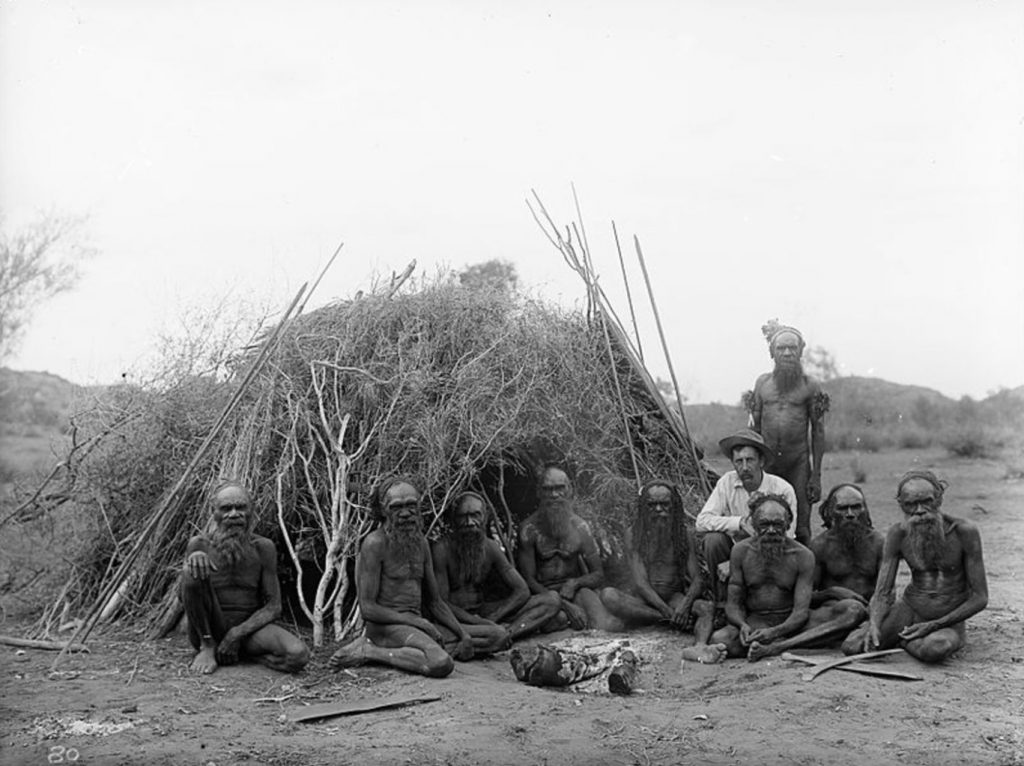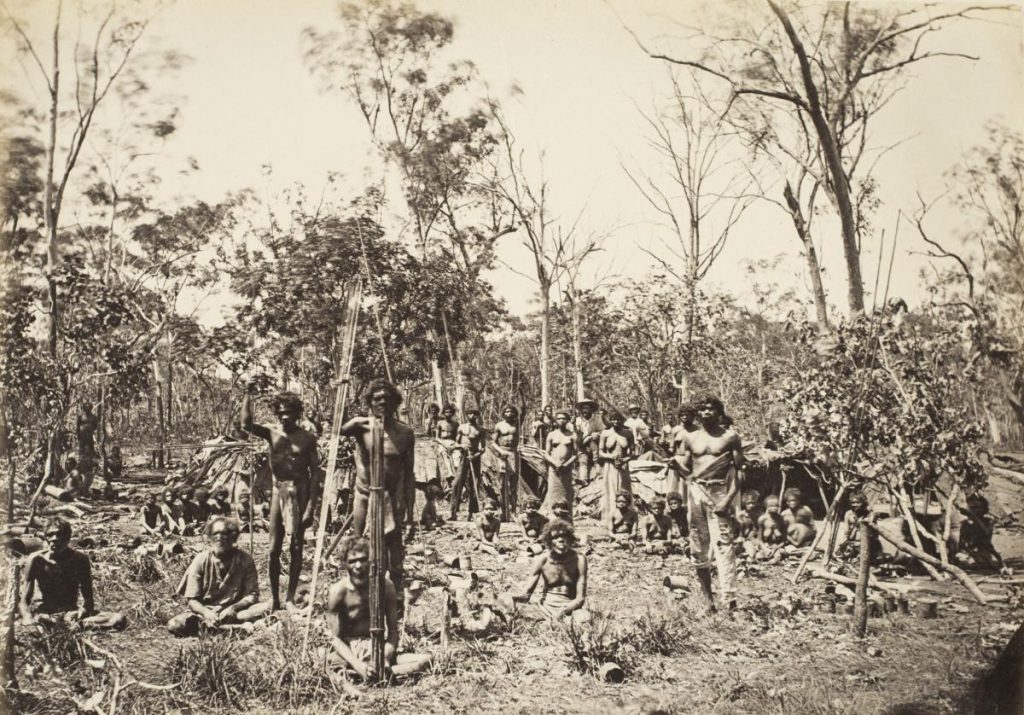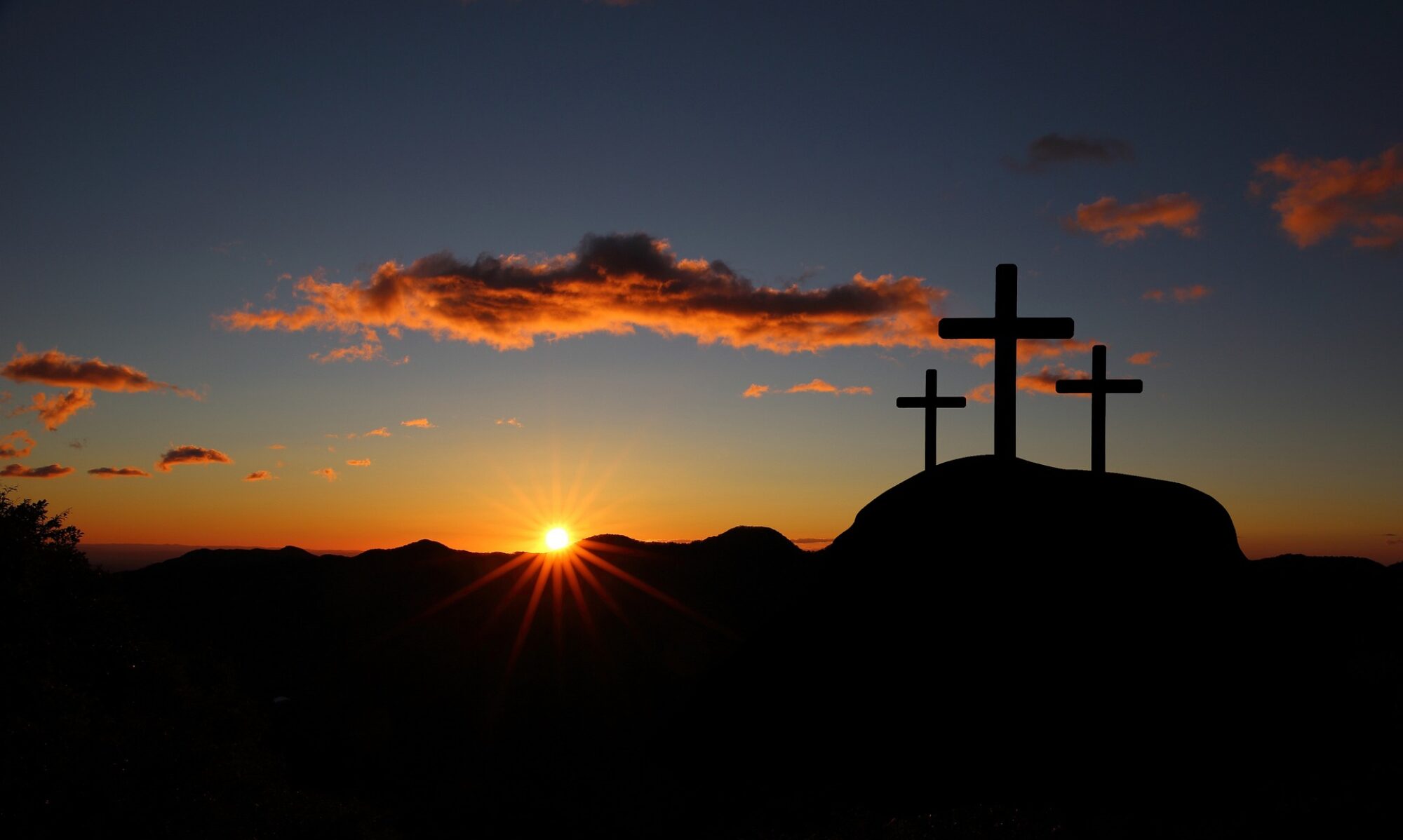Sacredness and Destruction

January 26, 1788, was a fatal day in the history of the Aboriginal peoples of Australia. That day the British invaded the continent and took possession of the land in the name of the Crown. To understand the cultural clashes that occurred between the invader, later colonisers, and the Aboriginal peoples, we need to understand something about their socio-cultural-spiritual paradigms and how diametrically opposed these were to those of the invader.
The Aboriginal belief system is based on the sacredness of the land and all living and inanimate things that form part of it. The creation of the world according to Aboriginal belief is called the Dream Time or the Dreaming but bears no relation to the Western meaning of the word. In the mists of time, before the world existed, ancestral spirits lay waiting beneath the surface of the land until such a time came when they erupted onto the surface and created all things on earth, both animate and inanimate. As they moved across the land, they also created the stories that accompanied their creational experiences. Many of these stories contain both the norms by which Aboriginal peoples should live and how they should relate to the land and to each other. Thus these stories become the core of sacred law to be passed down unaltered throughout time.
“Once the ancestor spirits had created the world, they changed into trees, the stars, rocks, watering holes or other objects. These are the sacred places of Aboriginal culture and have special properties. Because the ancestors did not disappear at the end of the Dreaming, but remained in these sacred sites, the Dreaming is never-ending, linking the past and the present, the people and the land” (Page 101).
As a result, every individual and group is inextricably linked to the land not as an owner or owners, but as a guardian or guardians who will ensure that the ancestral laws are implemented and that the social cohesion of the group both between each other and with the land will remain intact and secure. The concept of ownership of the land was totally incomprehensible to the Aboriginal peoples as their Spirit Ancestors had entrusted them with its guardianship to use with care and to abide by the ancestral sacred societal rules. Bill Neidjie, of the Gagudju people, neatly synthesises the relationship between Aboriginal peoples and the land:
“I feel with my body. Feeling all these trees, all this country. When this blow you can feel it. Same for country […] you feel it, you can look, but feeling […] that make you […]. Our story is in the land […] it is written in those sacred places […] My children will look after those places, that’s the law”.

Like all oral cultures, the Aboriginal peoples developed various means by which the law and creation stories of the ancestral spirits could permeate down through thousands of years unaltered. The main way to communicate the wisdom of the ancestors lay in storytelling. This was not a rehash of stories that changed and mutated with each generation, quite the reverse. The creation stories and the laws by which the people should live came down verbatim, unchanged through the careful tuition of the elders to the younger members of the clan. No change was allowed and so the stories that Europeans first heard in languages unintelligible to them were none other than those that were sung by the ancestral spirits as they created the world. Stories are, as we know, transmitted in multiple ways and Aboriginal cultures are no exception. Rock, bark and body painting, sand painting, singing, dancing, carving on artifacts were all a means of transmission. Sand painting is a particularly good medium to use as an example. While the elders sat with the young ones they would draw in the sand and, as they did so, sing the story of their painting. Similarly, as they moved across the country they would sing, tell stories and dance around the fireside. Sacred places would have their meaning explained in words and rhythms that never changed. Thus the children learnt the great creation stories and law and the continuity of the Aboriginal belief system and land was thus ensured (Page 102).
It would be wrong to imagine that all the stories were open to all the community. Many of the ceremonies were open to all but there were those that could only be heard and performed by the initiated and were banned to those who were not. Others were women’s stories alone and could only be retold among women, others were men’s stories and punishment for infringement of the gender barrier would be swift for the culprit, often resulting in their being banished from their clan and thus left to wander soulless across the land of others’. Once exiled from the land that spiritually and physically nourished them, a lonely death was often the only release.
While all comparisons have areas of slippage in meaning, perhaps the only way in which the non-Aboriginal can understand the importance of the land for them is by looking upon it as a sacred text that also contains the precepts of law, a people’s history, and genealogy, both collective and personal, and an intricate and complete cartography. A complex cosmology carefully guarded by the group and the individual. The ecosystem on the continent was and still is a delicate environment in which everything lived in a precarious relationship with the rest. Any disturbance of that ecosystem could bring about the most devastating consequences, as has been witnessed by the increasing desertification of the continent since the arrival of the Europeans.
Before the invasion of the continent, the Aboriginal peoples led a nomadic life as hunters and gatherers. Like other hunter-gatherer peoples, the women harvested roots, honey, and other edibles while the men hunted. Such was their knowledge of the land that they would move across it according to what was ready to be harvested or hunted in a particular area. As they moved, often hundreds of kilometres, they would “sing up” the land and perform the appropriate ceremonies at the various sacred sites on their way. The Aboriginals only took from the land as much as they needed to subsist, never exhausting any of its resources. They also engaged in what we call fire-stick farming. This entails a careful burning off of the scrub with two effects. Animals would run before the flames and could be easily hunted and the surface vegetation, once burned off, would soon yield new shoots on which the wildlife could graze and grow (Page 103).

Everything the Aboriginals did in their relationship with the land was to ensure the continuous abundance produced by the environment. It is no wonder then that, as Salvado noted, they were surprised that the white man could not survive in the desert areas when they could always find food and water. Only a profound knowledge of the land and its cyclical variations could make this possible, something the white man had alienated himself from thousands of years ago, besides finding himself in a totally hostile environment.
Unlike the Māori of Aotearoa, New Zealand or the North American Indians, the Aboriginal peoples were not warriors in the full sense of the word. There had never been out-and-out wars between clans, but individual grudges often settled in single combat. Over the thousands of years, they had lived on the land they had never had to defend it either against an invader or territorial clashes with other clans. This, unfortunately, led to the idea that the Aboriginals would not resist the European. Nothing could be further from the truth. Once they realised that the invader had no intention of sharing the land, nor of negotiation, but encroached further and further into their traditional lands, they soon learnt that attack and defence were the only viable ways to confront these outsiders. They were, however, ill equipped against the guns of both the military and the colonisers and thus mostly used guerrilla tactics, appearing out of nowhere, attacking and vanishing back into the bush. The superiority of numbers and weaponry and continued genocide, as we shall see later, were, however, to decimate their peoples and leave them on the edge of spiritual and physical exhaustion.
On invading Australia, the British made use of two terminologies that began the process of ‘invisibilising’ the Aboriginal peoples and nullifying their rights to their land. Australia was taken by the British using the term “terra nullius”, loosely translatable as “land belonging to nobody”, and in international law the term indicates land which has never been under the sovereignty of any state or people. Thus, anybody who occupies the land can claim sovereignty over it. By making use of this law the British established from day one that, in terms of international law, the Aborigines did not exist and that they had no claim over the lands they occupied. The second terminology which further ‘invisibilised’ the Aboriginal peoples was precisely “Aboriginal”. If we consider that we are all Aboriginals from somewhere, calling the natives of Australia by that name was a deliberate attempt to, firstly, place all the natives into one basket with no recognition of difference between them and, secondly, to basically refer to them with a no-name. When the British occupied North America, although the general term “Indian” was used, each tribe became known by its own name; thus, we have the Sioux, the Apache and so forth. Treatises, however dubious, were signed by the British and coloniser with tribes. In the case of Australia, no treatise was ever signed because, as it was terra nullius, the natives had no rights. Thus began the first attempts to ‘invisibilise’ and negate the existence of a people considered to be beyond the pale of civilisation and thus condemned to extinction. The question remains: how was it that the Aboriginal peoples began to die out so fast? (Page 104).
As with other invaded and colonised people, especially in North America and the Pacific, the Aboriginal peoples had no immune system that could counterattack such illnesses as smallpox, influenza, whooping cough, and the whole gamut of other ailments the invader introduced. Thus, there was a high death toll resulting from such illnesses. As the coloniser encroached upon Aboriginal lands, they drove their inhabitants away from their traditional hunting grounds and sources of food. Apart from this physical aspect, it is well known that Aboriginal peoples removed from their lands became spiritually debilitated, depressed enough to die from sadness because of separation from the land they had held in custody and with which they had communed over thousands of years. This state of mind also lowered their immune system, further helping to raise the numbers of deaths from white illnesses. There were also fearful clashes between the colonisers and the Aboriginal peoples. In retaliation for the Aboriginal stealing of stock on which to survive, not only were the culprits hunted down and killed but very often various members of their community were murdered as well. Policing this kind of horror on the colonial frontier was difficult and, if the general appreciation of the natives was that they were on their way to extinction, then did a murder really matter or, worse still, a massacre?
By the end of the nineteenth century, it became clear that the Aboriginal peoples, though greatly decimated in numbers, were not going into extinction and they were now referred to as the Aboriginal problem, a clear signifier that they were still profoundly troubling to the colonisers. In 1905 a new process was to begin which, it was hoped, would really put an end to the presence of Aboriginal peoples in Australia – eugenics (Page 105).
Large numbers of Aboriginal peoples were already living in or near missions or reservations and it now became of paramount importance that they be totally controlled. Between 1804 and 1911 the various states and territories brought in Aboriginal protection acts that were designed to strictly control the movement and private lives of all Aboriginal peoples. They were unable to move freely around the continent without special passes, they had to have special permission to marry, which, as we will see, formed the core of the practice of eugenics, they were not allowed to speak their languages or carry out any of their ritual ceremonies. Anna Haebich points out:
“The 1905 Act controlled virtually every aspect of Aboriginal lives – with whom they could associate, where they could live and work, and their earnings, personal property, family life, marriage, and sexual contacts – and allowed for their removal to institutions where they could be detained indefinitely. Fines and imprisonment awaited those who dared not to comply with its provisions. Such was the virtually totalitarian control vested in the so-called Chief Protector of Aborigines.”

As is well known, the theory of eugenics is based upon the belief of a genetically superior race and that all inferior races can be bred out through carefully controlled marriages. This resulted in one of the darkest parts of Australian history. In order for the Aboriginal race to be bred out, it was necessary to separate full blood from any contact with half-castes. At the same time, it was equally necessary that a half-blood Aborigine marry into whiter stock until eventually, in theory, the dark-skinned people would vanish. This theory, as we know, failed in practice because it did not take into account genetic throwbacks or the fallibility of a superior race. In order to implement the practice of controlling the descendants of Aboriginal peoples, those who were half-caste, quarter-caste, octoroons, etc., were separated from their families and taken far away from where the relatives remained in order to break all contact with them (Page 106).
From 1905 until the very early 70s, thousands of children were taken away from their parents and put into missions and orphanages or, if very blond, fostered out to white families. These children became known as the “Stolen Generations”, though the exact numbers taken away will never be known. Once in the missions they were indoctrinated into the Western culture. Forbidden to speak their languages or to search for their relatives, these youngsters were destined to be domestic workers or farm workers and to be fully assimilated into white society. It is difficult to imagine the accumulative traumatic effect that this constant separation of families could possibly produce both then and decades later.
The twentieth century saw the continuance of the assimilationist policy legislated in 1937. The minutes of the Aboriginal Welfare Conference of Commonwealth and State Authorities, which met in April 1937, clearly reveal the policy to be followed and the clear attempt to finally destroy Aboriginal culture:
“The destiny of the natives of aboriginal origin, but not of the full blood, lies in their ultimate absorption […] with a view to their taking their place in the white community on an equal footing with the whites”.
The legislation reinforced segregationist policies with separate areas in hospitals, schools refusing to enrol children and a whole host of other segregation criteria. It was not until 1967 that a Commonwealth referendum would be held to determine if Aboriginal peoples were to be given Australian citizenship and be included on the census. A landslide victory was supported by 97% of the voters and hopes now began to rise among the Aboriginal communities and those non-Aboriginal people who supported them that things would change. They would, but very slowly (Page 107).
Reference: Susan Ballyn. (2016). Power in Conflict with the Essence of Peoples. Universitat de Barcelona, Spain. Page 101 – 107. Doi:10.17075/rsmaa.2016.en.007

